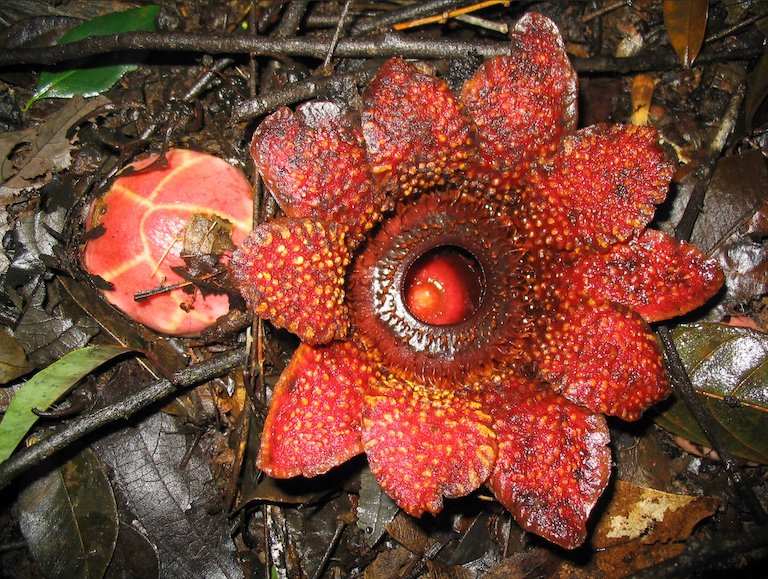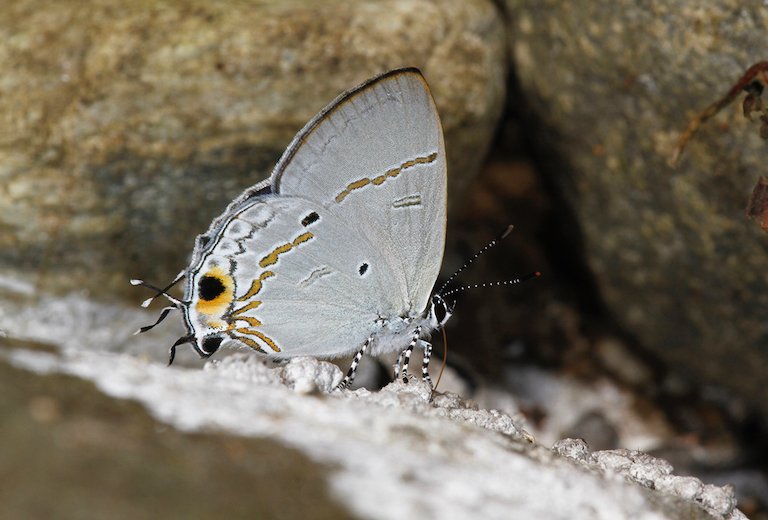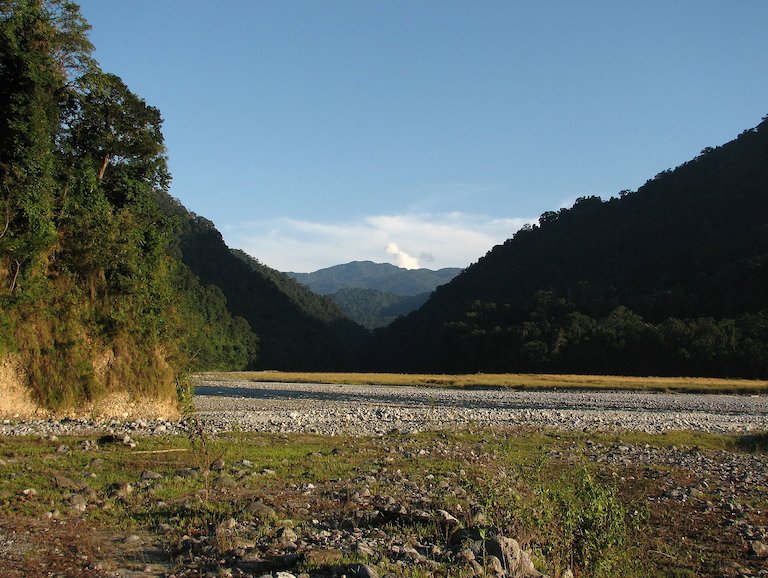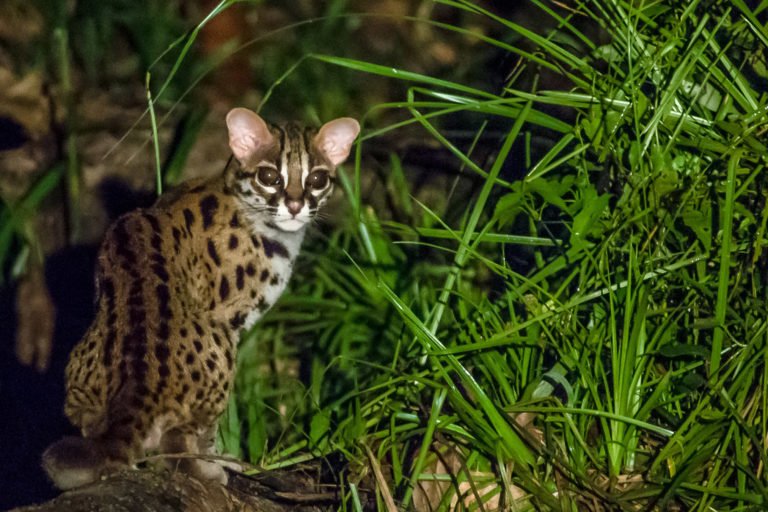- Namdapha National Park is India’s third-largest national park and is home to thousands of species, including tigers, clouded leopards and an endemic species of flying squirrel that has only been observed once by scientists.
- Satellite data show deforestation has increased in the park over the last two decades.
- Members of an Indigenous group called the Yobin have been living in portions of the park for generations, but park authorities consider Yobin settlements to be “encroachments” and the main driver of deforestation and poaching in Namdapha National Park
- In the last few months, authorities have destroyed at least eight Yobin settlements inside the park.
In the sprawling Himalayas, amidst snow-peaked mountains, is a vast swathe of evergreen forest home to majestic tigers, elusive clouded leopards, charismatic hornbills, mystical giant squirrels, enchanting butterflies and bizarre orchids. Comprising some 1,900 square kilometers (734 square miles) in the state of Arunachal Pradesh in Northeast India, Namdapha National Park is India’s third-largest national park and is considered one of Asia’s last large wildernesses as well as a biodiversity hotspot that harbors more than 1,000 floral and some 1,400 faunal species.
Murali Krishna Chatakonda, a professor at the Amity Institute of Forestry and Wildlife, India, studies the diversity, ecology and conservation issues of small mammals in the park. “Namdapha is home to some of the unique species [like the] Namdapha gliding squirrel, white-bellied heron, western hoolock gibbon, tiger, marbled cat, clouded leopard, [and] red panda,” Chatakonda said. “The list is pretty long.”
Conservation organization Birdlife International considers Namdapha National Park to be an Important Bird Area, with several rare species, including wren-babblers (genus Napothera) and critically endangered slender-billed vultures (Gyps tenuirostris). Namdapha is also home to the only-once-seen Namdapha flying squirrel (Biswamoyopterus biswasi) and the critically endangered Chinese pangolin (Manis pentadactyla). There is also a wealth of reptile, amphibian and insect diversity in the park.
The endangered hermit’s spittoon (Sapria himalayana) is also found here. A close cousin of the corpse flower (Rafflesia arnoldii), which has the largest single flower in the world, the flowers of hermit’s spittoon are around 20 centimeters (nearly 8 inches) in diameter and release a putrid odor when they bloom to attract pollinators normally drawn to decaying flesh.

A biodiversity treasure trove at risk
Namdapha National Park was originally declared a wildlife sanctuary in 1972, becoming a national park in 1983, as well as a tiger reserve under India’s Project Tiger. Bordering Myanmar, most of the park is located in the Changlang district of Arunachal Pradesh. Over half of Namdapha is covered in dense evergreen forest, a quarter with open forests and the rest is occupied by scrub forest, snow-covered mountains and grasslands. Within the park, there are a few tribal settlements, primarily of the Yobin (also called Lisu) people belonging to the Tibeto-Burman ethnic group that spans the borders of India, China and Myanmar, and who primarily depend on the park for their livelihoods.
Peppered with mountains and snowy peaks and shrouded by dense tree canopies, Namdapha’s landscape is a wilderness adventurer’s paradise. The park’s wealth of plants and animals—some of which biologists believe are yet unknown to science—makes the park a perfect study site for conservationists and researchers from India and around the world. But this natural wealth is now threatened.
For almost two decades, researchers have warned about the anthropogenic threats to Namdapha National Park, including forest degradation and fragmentation caused by logging as well as the poaching of threatened wildlife. A study published in Biological Conservation in 2008 rang alarm bells when researchers did not record a single tiger or leopard while surveying the park for three months; they also found large herbivores like sambar, gaur and serow were surprisingly rare. Anecdotal evidence suggests these animals were in abundance until the 1990s, and the researchers blamed hunting for the park’s low numbers of large mammals.

But the decline of large animal abundance in Namdapha has not dampened researchers’ hopes of discovering species new to science. In 2019, a crowdsourcing campaign by the IUCN’s Small Mammal Specialist Group (SMSG), Global Wildlife Conservation (GWC) and Guwahati-based conservation group Aaranyak raised $5,000 to fund researchers, including Chatakonda, in their search for the elusive Namdapha flying squirrel, which hasn’t been seen since its discovery in 1981. While that particular effort has not yet yielded a new sighting of the rare squirrel, recent discoveries of other new species of frogs, crabs, butterflies, and snails in and around the park have emphasized the uniqueness of Namdapha — and what stands to be lost.
“Road widening that is happening at present though affects [these] species [even though] it may not be considered as huge [a] threat as of now,” Chatakonda said. One such road being built and improved is the 150-kilometer (93-mile) Miao-Vijaynagar road that passes through the park and connects the remote settlements of Vijaynagar and Miao, and which is slated to be completed this year. Although the road facilitates patrolling activities in the rugged terrain, authorities believe it may also increase encroachments in the park as people settle along it and use it to access the forest.
Communities vs. government
Satellite data from University of Maryland visualized on the online platform Global Forest Watch show deforestation in the park has been steadily increasing over the past two decades and spiked sharply upwards in 2021. Preliminary data for 2022 show forest loss intensifying further during the first half of this year. Park authorities blame increased deforestation on encroachments by Yobin community members, and have been working to clear villages in the park over the past several months.

Yobin communities have found themselves in conflict with Namdapha park authorities for over half a century. While the authorities have long claimed that the Yobin have illegally encroached into the park, felled forests for agriculture and built settlements, Yobin leaders say they have lived here for generations and have nowhere else to go since their livelihood depends on the forests. Although the government of India recognizes the Yobins as an Indigenous group (referred to as a “Scheduled Tribe” in India) native to the region, the Arunachal Pradesh Forest Department has urged them to relocate with financial compensation, which community members have declined.
In early 2022, citing the need for tourism development and conservation, the Forest Department resorted to evicting Yobin communities inside Namdapha by tearing down their settlements and dismantling their farms.
“Encroachments do have a negative impact on biodiversity,” Chatakonda said. “Accessibility for hunting tends to increase with the increase in encroachments and secondly, the pristine forests are cleared paving way to human settlements.” He added that with forest-dwelling species at risk, the Forest Department is “doing great work” in removing settlements in the park.

During a May 2022 meeting between Yobin communities and Mama Natung, the Arunachal Pradesh Minister of Environment and Forests, Natung argued that the Yobin settlements inside the park are illegal according to Indian laws and need to be relocated to conserve the forest. He said that the Yobins could choose any other place to settle outside of the park, and that the government is ready to help them financially if they move.
However, Yobin representatives at the meeting only agreed to consider the request.
“Our grandparents have lived and died here. Where do we go?” said one Yobin woman as reported by the local media, “We will die here too.”
Banner image: The heavily charismatic and endangered red panda (Ailurus fulgens) is one of the many species found in the forests of Namdapha National Park. Image from the public domain.
Editor’s note: This story was powered by Places to Watch, a Global Forest Watch (GFW) initiative designed to quickly identify concerning forest loss around the world and catalyze further investigation of these areas. Places to Watch draws on a combination of near-real-time satellite data, automated algorithms and field intelligence to identify new areas on a monthly basis. In partnership with Mongabay, GFW is supporting data-driven journalism by providing data and maps generated by Places to Watch. Mongabay maintains complete editorial independence over the stories reported using this data.
Feedback: Use this form to send a message to the editor of this post. If you want to post a public comment, you can do that at the bottom of the page.











